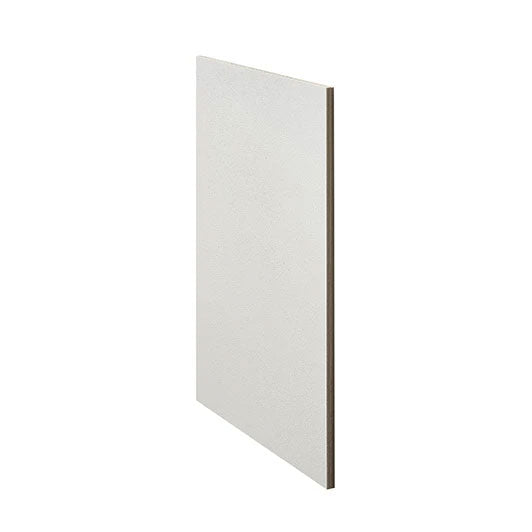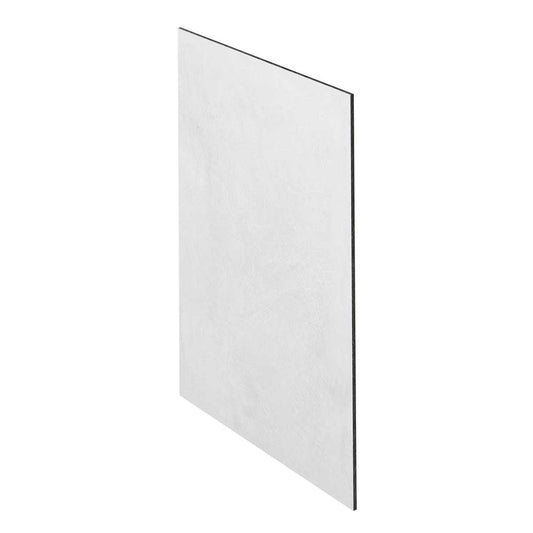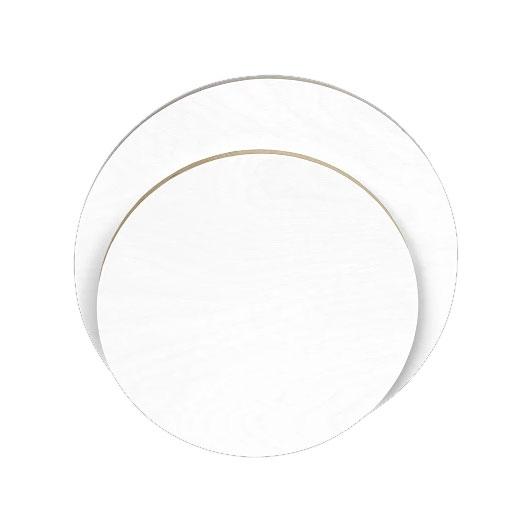When it comes to preparing a canvas for painting, artists often find themselves deliberating between oil ground and acrylic gesso. Both are used to prime canvases, but they serve different purposes and offer distinct advantages depending on the medium and desired effects. Understanding the differences between oil ground and acrylic gesso is crucial for achieving the best results in your artwork. Let's explore these two options in detail.
What is Oil Ground?
Oil ground is a traditional primer made from a mixture of linseed oil and white pigment, usually lead or titanium white. This type of primer has been used by artists for centuries and is specifically designed for oil painting.
Characteristics of Oil Ground:
- Absorbency and Texture: Oil ground provides a slightly absorbent surface with a smooth, slick finish. This texture is ideal for oil paints, as it allows the paint to glide smoothly over the canvas, facilitating blending and detailed work.
- Drying Time: One of the significant drawbacks of oil ground is its long drying time. It can take several days to weeks to dry completely, depending on the thickness of the application and environmental conditions.
- Durability: Oil ground creates a durable and flexible surface that is less prone to cracking over time compared to acrylic gesso. This is because the oil content keeps the canvas pliable.
- Color and Yellowing: Traditional oil ground can yellow over time due to the nature of linseed oil. However, modern formulations with titanium white are more resistant to yellowing.
When to Use Oil Ground:
-
When working exclusively with oil paints: Oil ground is specifically formulated for oil paints, offering optimal adhesion and compatibility with this medium. Artists who prefer the rich, creamy texture and slow drying time of oil paints will find oil ground to be the perfect primer for their canvases.
-
When a smooth, slick surface is desired for detailed work: The smooth texture of oil ground provides an ideal surface for intricate and detailed painting. It allows the brush to glide effortlessly, enabling artists to achieve fine lines, subtle gradients, and delicate brushwork with precision.
-
When time allows for extended drying periods: Oil ground typically has a longer drying time compared to acrylic gesso. Artists who have the luxury of time and prefer to work at a leisurely pace may appreciate the slow drying nature of oil ground. This extended drying period allows for greater control over blending and layering techniques, resulting in nuanced and refined artworks.
-
When aiming for a traditional approach with a potentially more durable finish: Oil ground embodies tradition and has been favored by artists for centuries. Its time-tested formula, composed of linseed oil and white pigment, imparts a classic aesthetic and offers a potentially more durable finish compared to acrylic gesso. For artists seeking to honor tradition and create artworks with lasting integrity, oil ground is an excellent choice.
Explore Trekell Oil Ground Panels:
For artists who appreciate the elegance of oil ground but seek added convenience and consistency, Trekell oil ground panels offer a compelling solution. These meticulously crafted panels feature a premium oil ground surface that is expertly applied to archival-quality panels, ensuring a reliable and consistent painting surface every time. Whether you're a seasoned professional or an aspiring artist, Trekell oil ground panels provide the perfect foundation for your oil paintings, combining tradition with modern innovation.
What Trekell Oil Ground Panels do you offer?
- Oil Ground Panel - 1/4" Baltic Birch
- Oil Ground Panel - 1/8" Aluminum Composite Material
- Oil Ground Panel - 1/8" Hardboard
What is Acrylic Gesso?
Acrylic gesso is a modern primer made from a blend of acrylic polymer emulsion, calcium carbonate, and white pigment (usually titanium dioxide). It is versatile and widely used by artists for various painting mediums.
Characteristics of Acrylic Gesso:
- Absorbency and Texture: Acrylic gesso provides a highly absorbent surface with a toothy texture. This texture helps hold paint in place, making it suitable for acrylics, oils, and other media.
- Drying Time: Acrylic gesso dries quickly, usually within minutes to a few hours, depending on the thickness of the application. This fast drying time allows artists to start painting soon after priming.
- Durability: While acrylic gesso is flexible and less prone to cracking than traditional grounds, it is not as flexible as oil ground. However, it provides a stable and robust foundation for most painting techniques.
- Color Stability: Acrylic gesso is highly stable and resistant to yellowing over time. It maintains its bright white appearance, which can enhance the vibrancy of subsequent paint layers.
When to Use Acrylic Gesso:
-
When working with acrylic paints or mixed media: Acrylic gesso is specifically designed to provide a stable and absorbent surface for acrylic paints. Its compatibility with acrylics makes it the preferred choice for artists who primarily work with this versatile medium. Additionally, acrylic gesso can also be used for mixed media artworks, accommodating various painting techniques and materials.
-
When a textured surface is preferred to help hold paint: Acrylic gesso imparts a textured, toothy surface that enhances paint adhesion and holds paint layers in place. This texture is particularly beneficial for artists who enjoy building up layers of paint or employing impasto techniques, as it provides grip and depth to the artwork.
-
When quick drying is necessary to proceed with the painting process: One of the key advantages of acrylic gesso is its fast drying time. Artists who value efficiency and prefer to work with a quick turnaround time will appreciate the rapid drying properties of acrylic gesso. This allows them to begin painting shortly after applying the primer, minimizing downtime and maximizing productivity in the studio.
-
When a bright white, stable ground is desired: Acrylic gesso offers excellent color stability and resistance to yellowing over time, ensuring that the artwork maintains its brightness and vibrancy for years to come. This stable ground provides a reliable foundation for artwork, allowing artists to focus on their creative expression without worrying about the long-term integrity of their paintings.
Explore Trekell Acrylic Gesso Panels:
For artists seeking the reliability and convenience of acrylic gesso with the added assurance of quality craftsmanship, Trekell Acrylic Gesso panels are the perfect solution. These panels feature a professionally applied layer of premium acrylic gesso, providing a consistent and archival-quality painting surface. Whether you're a professional artist or a hobbyist, Trekell Acrylic Gesso panels offer durability, stability, and versatility, making them an essential tool for your artistic endeavors. Experience the difference with Trekell Acrylic Gesso panels and unlock your creative potential with confidence.
What Trekell Acrylic Gesso panels do you offer?
- Acrylic Gesso 1/8" Aluminum Composite Panels
- Acrylic Gesso 1/8" Hardboard Panels
- Acrylic Gesso 1/4" Baltic Birch Panels
- Acrylic Gesso Mini Panels Packs
- Acrylic Gesso 1/2" Round Baltic Birch Panels
- Acrylic Gesso 7/8" Hardboard Cradled Traditional Panels
- Acrylic Gesso 1 5/8" Hardboard Cradled Gallery Panels
Choosing Between Oil Ground and Acrylic Gesso
The choice between oil ground and acrylic gesso depends largely on the medium and the desired outcome of your artwork. Here are some key considerations:
- Medium Compatibility: If you are exclusively using oil paints, oil ground might be the better option for its smooth finish and compatibility. For acrylic paints, acrylic gesso is the preferred choice.
- Working Time: If you need a fast-drying ground to start painting quickly, acrylic gesso is the way to go. If you can afford to wait for the ground to dry thoroughly, oil ground offers a unique texture and durability.
- Surface Texture: Consider the type of surface you prefer. A smooth, slick surface is best achieved with oil ground, while a textured, toothy surface is provided by acrylic gesso.
- Longevity and Color Stability: Acrylic gesso tends to be more color-stable and less prone to yellowing over time. If long-term stability and brightness are essential, acrylic gesso is a reliable choice.
In summary, both oil ground and acrylic gesso have their distinct advantages and ideal uses. By understanding their properties and how they interact with different painting mediums, artists can make informed decisions to enhance their creative process and achieve the desired effects in their work. Whether you lean towards the traditional allure of oil ground or the versatility of acrylic gesso, the right primer can significantly impact the quality and longevity of your artwork.















